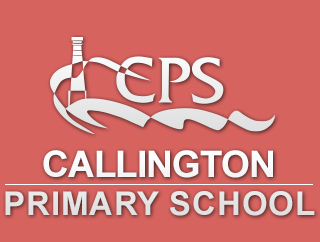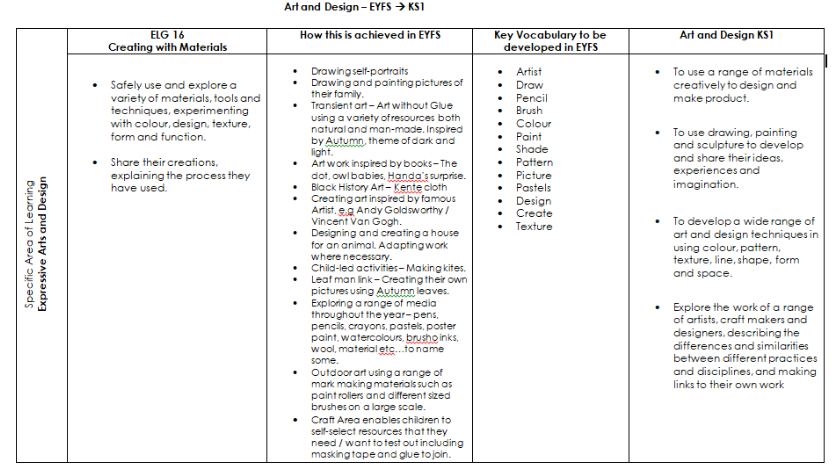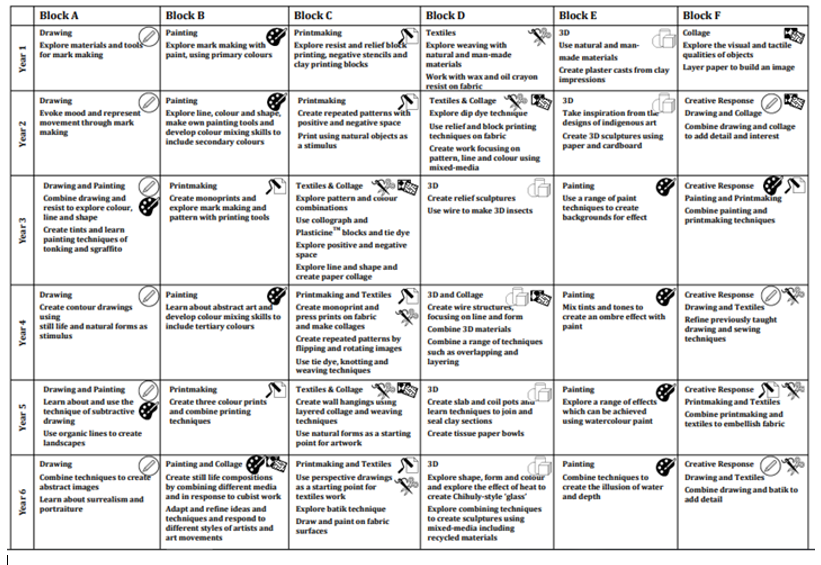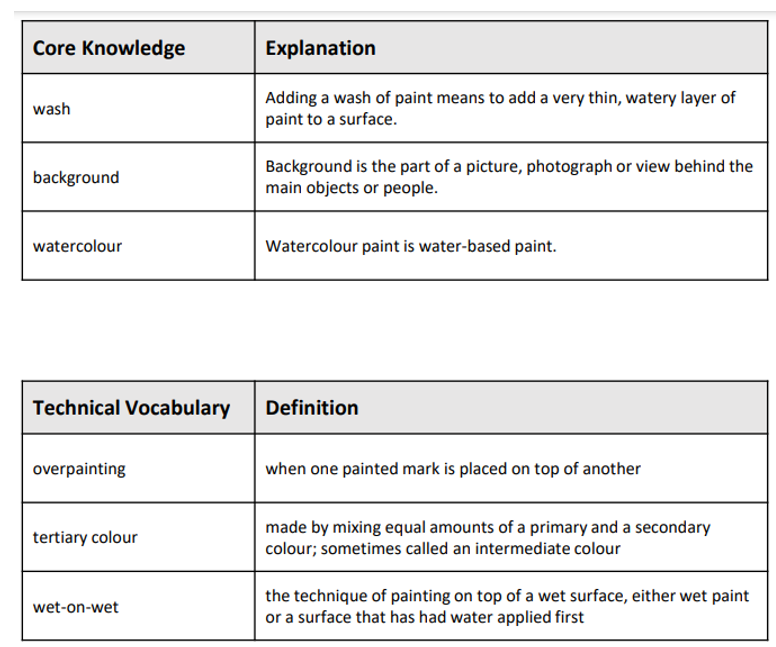Our Art curriculum is designed to engage, inspire and challenge pupils, whilst equipping them with the knowledge and skills to be able to experiment, invent and create their own works of art. As pupils progress, they should gain a deeper understanding of how art and design reflects and shapes our history, and how it contributes to the culture, creativity and wealth of our world.
We want our children to love art and design! We want them to have no limits to what their ambitions are and to grow up wanting to be illustrators, graphic designers, fashion designers, curators, architects or printmakers.
We want to prepare them for the opportunities, responsibilities and experiences of later life. We want our children to use the vibrancy of our great country as inspiration, to learn from other cultures and respect diversity. To that end, we have carefully selected a wide range of unique and diverse artists, craft makers and designers for children to study.
“I found I could say things with colour and shapes that I couldn’t say any other way—things I had no words for.” Georgia O'Keefe
Callington Primary School adopted the CUSP Art curriculum starting in Autumn, 2024.
This is organised into blocks with each block covering a particular set of artistic disciplines, including drawing, painting, printmaking, textiles, 3D and collage. Vertical progression in each discipline has been deliberately woven into the fabric of the curriculum so that pupils can revisit key disciplines throughout their Primary journey at increasing degrees of challenge and complexity.
In addition to the core knowledge required to be successful within each discipline, the curriculum outlines key aspects of artistic development in the Working Artistically section. Each module will focus on developing different aspects of these competencies. This will support teachers in understanding pupils’ development as artists more broadly, as well as how successfully they are acquiring the taught knowledge and skills.
What do we teach?
Early Years
Children use what they have learnt about media and materials in original ways, thinking about uses and purposes. They represent their own ideas, thoughts and feelings through design and technology, art, music, dance, role-play and stories.
KS1/2 overview
How do pupils learn
-
Class timetables have been built to ensure a broad and balanced curriculum.
-
Subjects have been blocked in a spaced retrieval model to support catch up and to build the frequency of science and wider curriculum subjects. This maximises learning time
-
Art has been timetabled in an extended session to enable children to have time to develop depth.
Overview of Knowledge
The overview provides a list of the expected outcomes for the block provides details of the artistic knowledge and skills pupils will be expected to have acquired by the end of the block. It includes detailed explanations of the core knowledge covered in each block.
Art unit example - Year 4
KNOWLEDGE NOTES
Knowledge notes focus pupils’ working memory to the key question that will be asked at the end of the lesson. It reduces cognitive load
RETRIEVAL PRACTISE
Retrieval practise is planned into the curriculum through spaced learning and interleaving and as part of considered task design by the class teacher. Teaching and learning resources and provided for class teachers so they can focus their time on subject knowledge and task design.
SEND
Within Art and Design ALL pupils will take part in all the lesson sequences, but we need to be clear about the critical core content for pupils with SEND.
As part of the planning and preparation for the delivery of each block, teachers will need to consider how specific activities or the delivery may need to be adjusted to ensure that pupils with SEND are able to access the materials and participate fully in the lesson.
Pupils with language and communication difficulties (including those with ASD) may need additional visual prompts to help them understand what is expected of them. Some pupils may require individual task boards to enable them to follow a series of steps where a task has been broken down into smaller, more manageable chunks.
Some pupils may have sensory sensitivities. For those pupils, adjustments may need to be made in order for them to access materials. For example, pupils can be provided with crayons or pastels in paper sleeves. Pupils who have significant motor skill difficulties may require pencil grips or sloped surfaces to work on.
Vocabulary
The units are supported by vocabulary modules which provide both resources for teaching and learning vital vocabulary and provide teachers with Tier 2 and 3 vocabulary with the etymology and morphology needed for explicit instruction details relevant idioms and colloquialisms to make this learning explicit.
We aim to provide a high challenge with low threat culture and put no ceiling on any child’s learning, instead providing the right scaffolding for each child for them to achieve.





